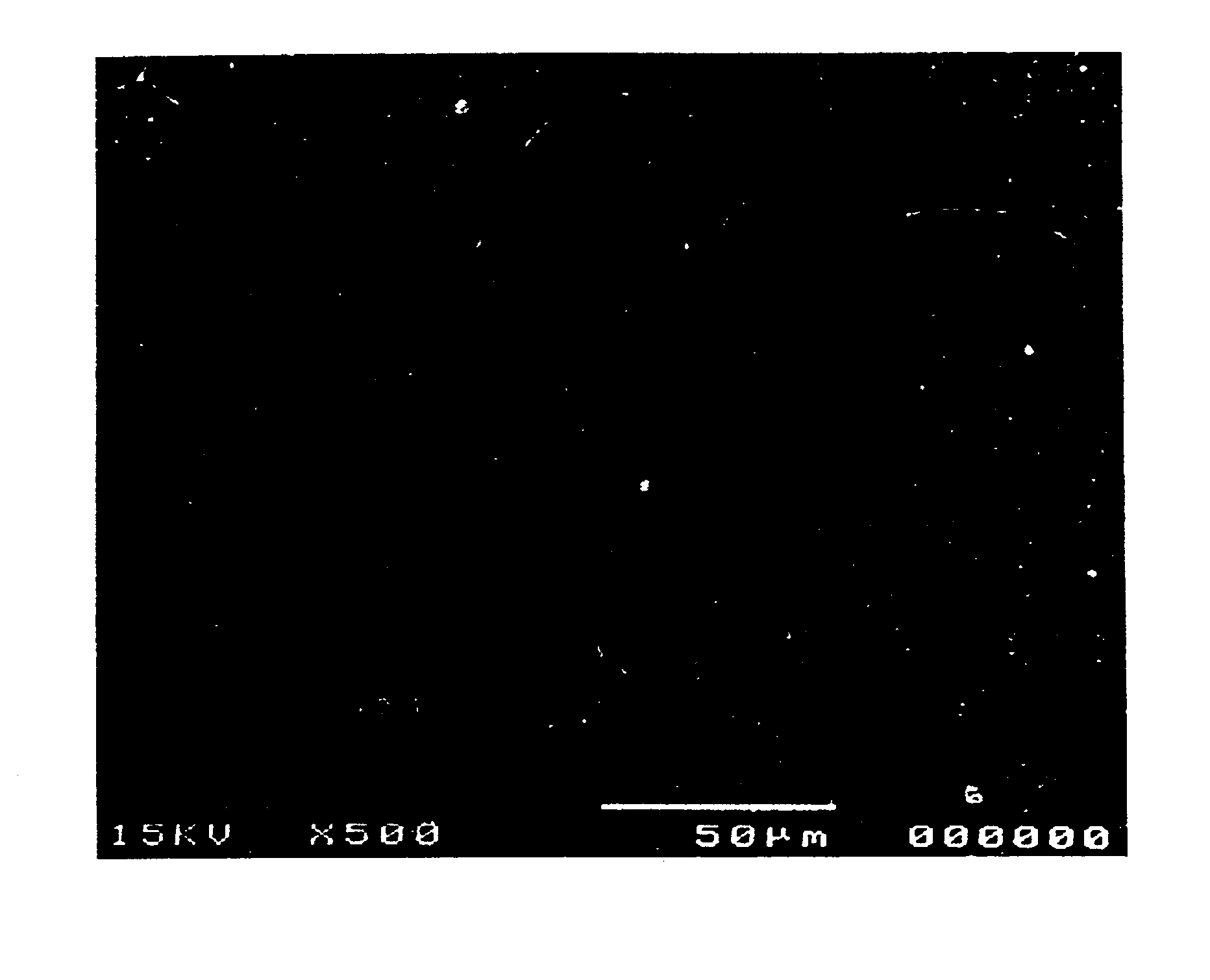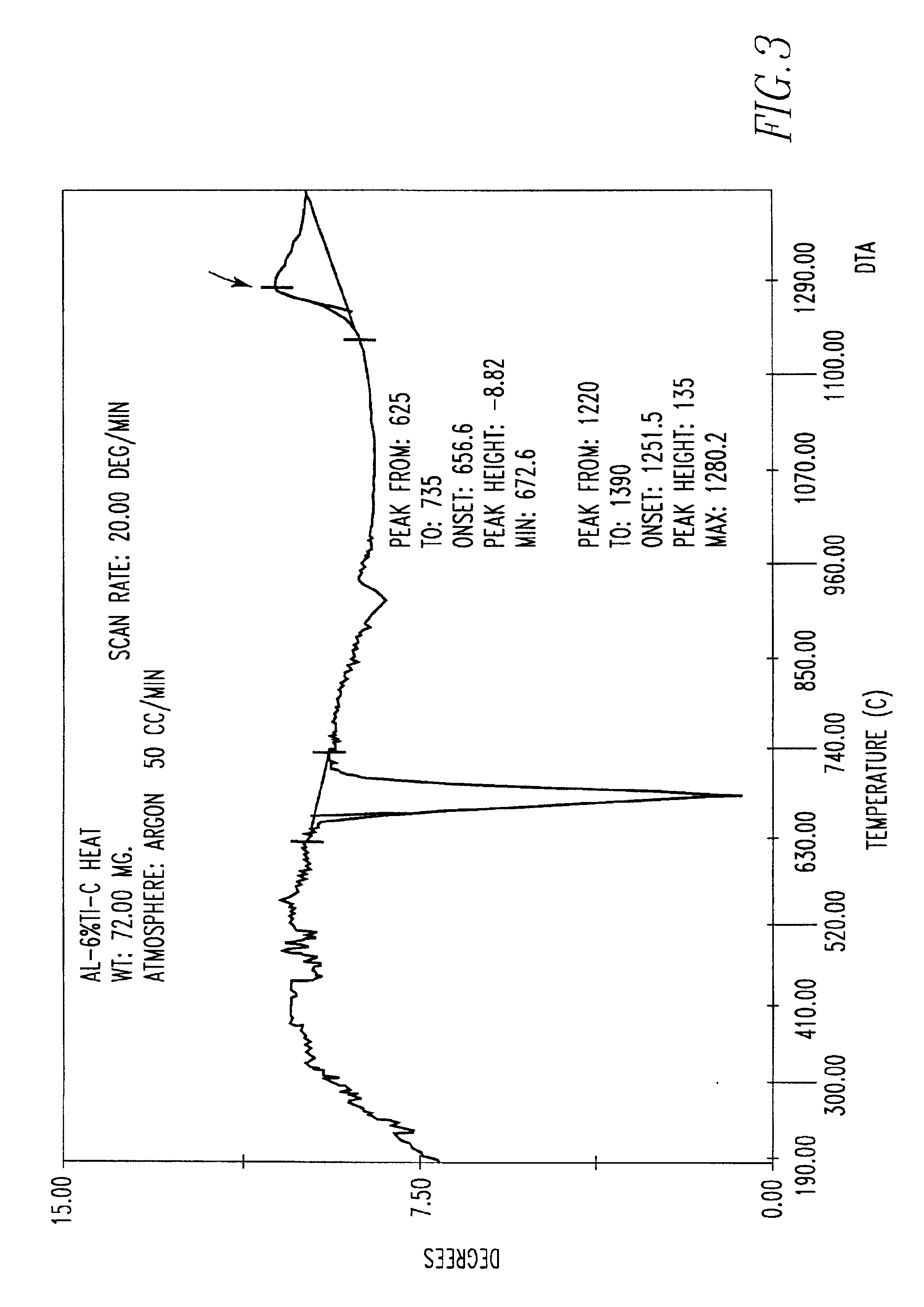Metal product containing ceramic dispersoids form in-situ
a technology of ceramic dispersoids and metal products, which is applied in the field of metal products containing ceramic dispersoids form in-situ, can solve the problems of inability to use dispersoids for recrystallation control, dispersion strengthening, and inability to form clusters,
- Summary
- Abstract
- Description
- Claims
- Application Information
AI Technical Summary
Benefits of technology
Problems solved by technology
Method used
Image
Examples
example 2
A mixture of 2.6 grams of Al-6% Ti powder and 0.32 grams graphite powder. 0.72 grams was formed and then placed in an Al.sub.2 O.sub.3 crucible of a DTA unit (Differential Thermal Analyzer). The crucible and sample was then heated to a temperature from room temperature 1300.degree. C. at a rate of 50.degree. C. / min under an argon atmosphere.
The results of the DTA is shown in FIG. 3. A peak shown at approximately 1275.degree. C. (as indicated by an arrow in FIG. 3) is an exothermic reaction, indicating the formation of TiC particles.
example 3
The procedure of Example 2 was repeated except that 2.6 grams of Al-5.7% Zr powder was mixed with 0.32 grams graphite powder. 0.71 grams. As before the mixture placed into an Al.sub.2 O.sub.3 crucible of a DTA unit and heated to a temperature. 1300.degree. C. at a rate of 50.degree. C. / min under an argon atmosphere.
The results of the DTA is shown in FIG. 4. A peak shown at approximately 1275.degree. C. (as indicated by an arrow in FIG. 4) is an exothermic reaction, indicating the formation of ZrC particles. These ZrC particles act as a dispersoid in aluminum alloys.
example 4
The procedure of Example 2 was repeated except that 2.6 grams of Al-5.1% V powder was mixed with 0.32 grams graphite powder. 0.71 grams of this mixture was then placed in an Al.sub.2 O.sub.3 crucible of a DTA unit. The sample was heated to a temperature 1300.degree. C. at a rate of 50.degree. C. / min under an argon atmosphere.
The results of the DTA is shown in FIG. 5. A peak shown at approximately 1270.degree. C. (as indicated by an arrow in FIG. 5) is an exothermic reaction, indicating the formation of VC particles. These VC particles act as a dispersoid in aluminum alloys.
PUM
| Property | Measurement | Unit |
|---|---|---|
| Particle size | aaaaa | aaaaa |
Abstract
Description
Claims
Application Information
 Login to View More
Login to View More - R&D
- Intellectual Property
- Life Sciences
- Materials
- Tech Scout
- Unparalleled Data Quality
- Higher Quality Content
- 60% Fewer Hallucinations
Browse by: Latest US Patents, China's latest patents, Technical Efficacy Thesaurus, Application Domain, Technology Topic, Popular Technical Reports.
© 2025 PatSnap. All rights reserved.Legal|Privacy policy|Modern Slavery Act Transparency Statement|Sitemap|About US| Contact US: help@patsnap.com



